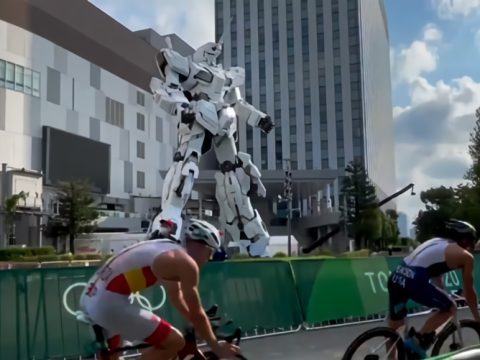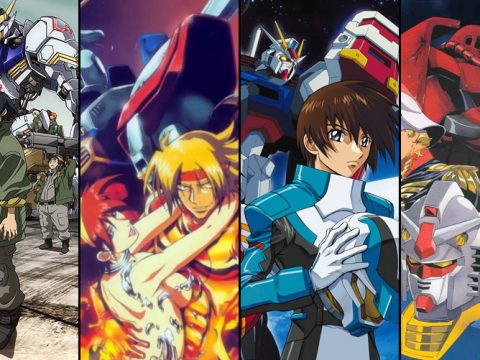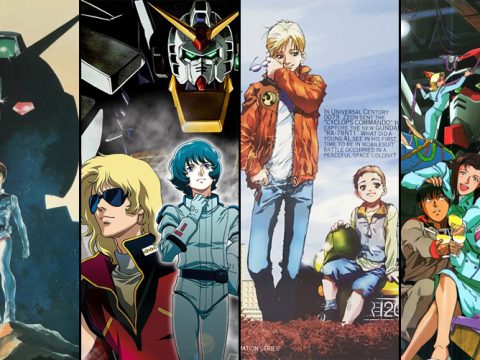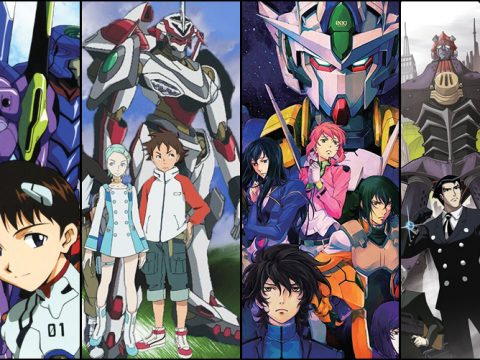Dancougar: Super Beast Machine God
If you’ve picked up the most recent issue of OUSA, you’ve likely read a review of the shoujo drama Glass Mask. In doing a bit of research for that review, we came to learn about previous incarnations of the story and found one of the staff from the ’80s version worked on another cool series that was also released in the U.S. but has since gone by the wayside, namely Super Beast Machine God Dancougar.
Ok… I admit, that’s kind of a weak tie-in excuse to write about a big robot anime. But then….there shouldn’t be the need for an excuse to write about a big robot anime, especially one as good as this was. Dancougar was produced during the height of the ’80s super robot era, where multiple machines would join together to create a giant gestalt and save the day. What set Dancougar apart from many similar shows of that time though was the intensity of the storyline as well as the way the “big bot saves the day” routine would actually come into play. Believe it or not, it was quite different from, say, Voltron or similar fare.
In these desperate times, leading Earth General Ross Igor and Dr. Hazuki decide to recruit hothead pilot Shinobu Fujiwara to fly a new experimental fighter plane, which resembles an eagle, feeds off his anger and becomes nearly invulnerable to attack in the process. He’s soon joined by Sara Yuki who pilots a tank that can change into a cougar, Masato Shikibu who pilots one that transforms into a liger-like mode, and Ryo Shiba whose mech turns to a mammoth-type creature.
These special fighters give the enemy all they can handle for about half the series, but eventually they a third mode that can only be activated by their combined fighting spirit, as well as shouting out the letters “D! A! N! C! O! U! G! A!” Sure enough, the music kicks in and the fighters reconfigure to interlock into the big butt-kicking ‘bot Dancougar! This stack & attack sequence becomes the money shot for fans to see in just about every episode thereafter, and audiences are better for it.
That doesn’t mean that director Nobuyoshi Habara didn’t put some good effort into the show before moving on to projects such as Dorvack, DNAngel, RIN: Daughters of Mnemosyne, and Heroic Age (also reviewed in the latest OUSA). His well-written story (which used Christian themes better than a certain other robot show produced by Gainax) and energetic characters were the foundation for the great production values of the ’80s, particularly in the fight sequences which utilized highly detailed art pieces prevalent in mech shows back then; designs from Masami Obari (Bubble Gum Crisis, Cross Fight Dangaio, Gravion) led the way. There were times where the general tone could be compared to Machine Robo and God Mars, but Dancougar carves a niche all its own.
The Software Sculptors arm of U.S. Manga Corps released the Dancougar TV series in the U.S. on videotape, but no other releases followed this, not even on DVD. Since the dissolution of USMC, no one has stepped forward to acquire this license and it would be a shame to let a gem like this fall into obscurity. If you can find a VHS-bin at a convention dealer room or hunt tapes down on ebay, I’d definitely recommend Super Beast Machine God Dancougar for burning hot mecha action. Fun times will ensue.


![SSSS.Dynazenon [Anime Review] SSSS.Dynazenon [Anime Review]](https://otakuusamagazine.com/wp-content/uploads/2021/08/16-9-SSSS.Dynazenon_Key_Visual_3.5-480x360.jpg)
![Back Arrow [Anime Review] Back Arrow [Anime Review]](https://otakuusamagazine.com/wp-content/uploads/2021/07/ba15-02686-480x360.jpg)



